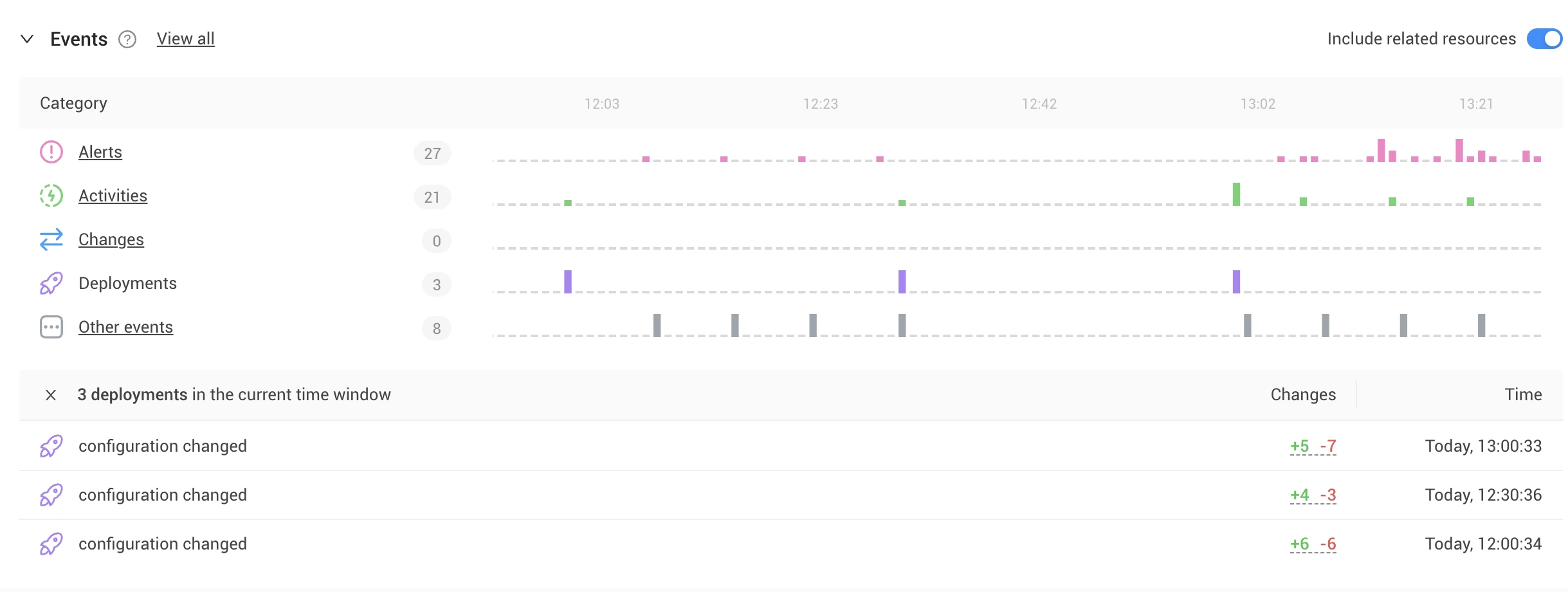If you work with Kubernetes, you know that any number of issues can pose a serious threat to the stability and security of your deployments. One that's subtly damaging is configuration drift, which occurs when the actual state of how your system is set up — its configuration — strays from the way you defined.
Configuration drift in Kubernetes can happen when people make changes manually, systems aren't synchronized properly or monitoring falls short. The impact of configuration drift can be far-reaching, affecting not just the stability of your applications but also posing security risks. For instance, an unvetted change in a config file could expose your system to vulnerabilities.
It’s important to acknowledge that not all drifts are harmful. There are acceptable and unacceptable risks. For example, temporary drifts for testing purposes could be perfectly acceptable, while drifts that expose your Kubernetes system to security risks or that can cause application failure should be prevented.
In the following sections, we'll break down what configuration drift is, why you should care, and, most importantly, how to steer clear of it to keep your Kubernetes environment safe and stable.
What Causes Configuration Drift in Kubernetes?
Have you ever had the setup of your Kubernetes cluster accidentally veer off course from how it's supposed to be? That's configuration drift — the inadvertent shift of configuration settings in a Kubernetes cluster away from its intended or original state.
This unintended change can occur for a variety of reasons, including:
Manual Changes
Your DevOps engineers might decide to tweak things manually, making changes without updating the Git repository or central hub. It's like an orchestra performing together but the woodwind section forgets to follow their sheet music — something's going to go off script!
Hotfixes
In emergencies, quick fixes are essential. To correct a software bug or fault, a small piece of code or configuration may be developed and released as quickly as possible. But when these hotfixes aren't sufficiently documented, it's like patching up a leak without noting where it was. Over time, these undocumented fixes can lead to drift, steering your system off its intended path. Also, when leaving the beaten path whilst releasing these fixes, mistakes are easily made, and crucial steps can be forgotten, leading to a system that’s in an inconsistent state.
Lack of Communication
If teams work in silos, they're probably not exchanging information effectively. The lack of communication — or managerial oversight — can cause unexpected turns and twists leading to configuration drift in your Kubernetes setup.
Now that we've unraveled the intricacies of configuration drift let's explore the strategies employed to effectively manage configuration changes in Kubernetes.
How to avoid configuration drift
Of course, to maintain a consistent and secure Kubernetes environment, you'll want to avoid configuration drift as much as possible.
Here are some best practices for how to do that
Clear communication channels
Establishing effective communication among DevOps, security teams and business units is a linchpin in thwarting configuration drift. Open and transparent dialogue ensures a shared understanding, minimizing the chances of unexpected changes slipping through unnoticed.
Continuous monitoring
Implementing a robust monitoring strategy acts as a guard against configuration drift. Regularly scanning the environment for changes not only detects deviations quickly but also provides valuable insights into the health and stability of your Kubernetes setup.
Automation with as-Code templates
Adopting an Everything-as-Code approach minimizes the chances of human errors while ensuring consistent configurations. By automating the setup process, you create a standardized foundation, reducing the risk of drift while assuring efficiency and reliability of your Kubernetes environment and the applications running therein.
Thorough documentation practices
Maintaining meticulous records of all configuration changes serves as a comprehensive log, offering a clear trail of modifications. This helps in understanding your setup's evolution and proves invaluable when troubleshooting or rolling back changes.
By keeping these best practices in mind, you harden your defenses against configuration drift and are able to offer a secure and consistent Kubernetes environment. But what happens if configuration drift slips in?
Managing configuration drift when it happens
In the face of configuration drift, adopting strategic measures is crucial. Here's how you can effectively manage and prevent it:
Leverage GitOps tools to maintain version control
Ensure uniformity across all environments and configurations, designating Git as the single source of truth. This practice enables easy issue tracking and streamlines the process of rolling back changes when needed.
Improve testing documentation
While manual changes are sometimes necessary, particularly for testing or "quick fix" purposes, ensure that these changes are documented meticulously and the modifications are transparent and accessible to everyone involved. This not only helps in understanding the changing landscape, it also aids in identifying any unintentional drift. By having a clear overview of the manual changes, it becomes easy to, at a later point in time, make them part of the standard configuration, eliminating the configuration drift.
Embrace the concept of immutable infrastructure
For most instances, when configurations are set, they should remain unalterable, substantially reducing the likelihood of configuration drift by establishing a framework that resists unintended changes. Check out Roxana Ciobanu's outstanding InfoQ article on this topic .
While implementing strategies, such as immutable infrastructure and GitOps, which are crucial for managing and preventing configuration drift, having the right tools can further enhance your ability to maintain a stable and secure Kubernetes environment. An invaluable tool that detects, addresses, and visualizes configuration drift is StackState.
5 ways StackState can help with configuration drift
Adhering to the best practices outlined above and utilizing the right tools can help you significantly mitigate the risks associated with configuration drift. But how can you detect why configuration drift is happening and know where to take action?
That's where StackState comes into play. We offer the following five game-changing capabilities to make it easy to handle configuration drift in your Kubernetes environment.
1. Centralized insights
StackState provides a centralized dashboard for all Kubernetes resource configurations in production. Having them easily accessible in one location simplifies the process of navigating through them, allowing engineers to quickly identify and address discrepancies and ensure that configurations remain consistent across the board.
2. Change tracking for informed decision-making
Understanding what has changed and when it changed in your Kubernetes environment is critical to managing configuration drift. StackState's change tracking feature offers a comprehensive view of all modifications made over time, allowing teams to pinpoint the exact changes and their impact. This transparency ensures that teams are always informed and can make decisions based on accurate and up-to-date information.

3. Out-of-the-box configuration drift monitoring
Maintaining system stability requires the ability to catch configuration drift before it gets out of hand. StackState offers an out-of-the-box monitor specifically designed to detect whether your Pod is up to date with the current configuration, like whether a config change has been propagated into the runtime behavior. It continuously scans the environment, identifies deviations from the defined state, and alerts stakeholders immediately for faster remediation.
4. Remediation guidance for efficient resolution
Once configuration drift is detected, the next step is to address it effectively. StackState provides expert remediation guidance, offering clear and actionable steps to revert to the desired state. This ensures that teams of any skill level can quickly and efficiently resolve issues and minimize risks and disruptions.
5. Clear timeline presentation
Understanding the sequence of events in a Kubernetes cluster can be challenging. StackState's Event Timeline offers a clear visualization of all deployments, changes, activities, and events that occur within the cluster. With a chronological view, it's easier to trace any issues, understand the root cause, and ensure everything runs smoothly.

Don’t risk drift!
Configuration drift in Kubernetes is not just an operational issue but a significant risk that can affect your environment's stability and security.
By understanding its causes and implementing strategies like immutable infrastructure and GitOps, you can keep your Kubernetes deployments secure and drift-free.
And for those times when drift happens, there’s StackState. To get the most out of StackState, take us for a test run . Or try us out by exploring our playground !



